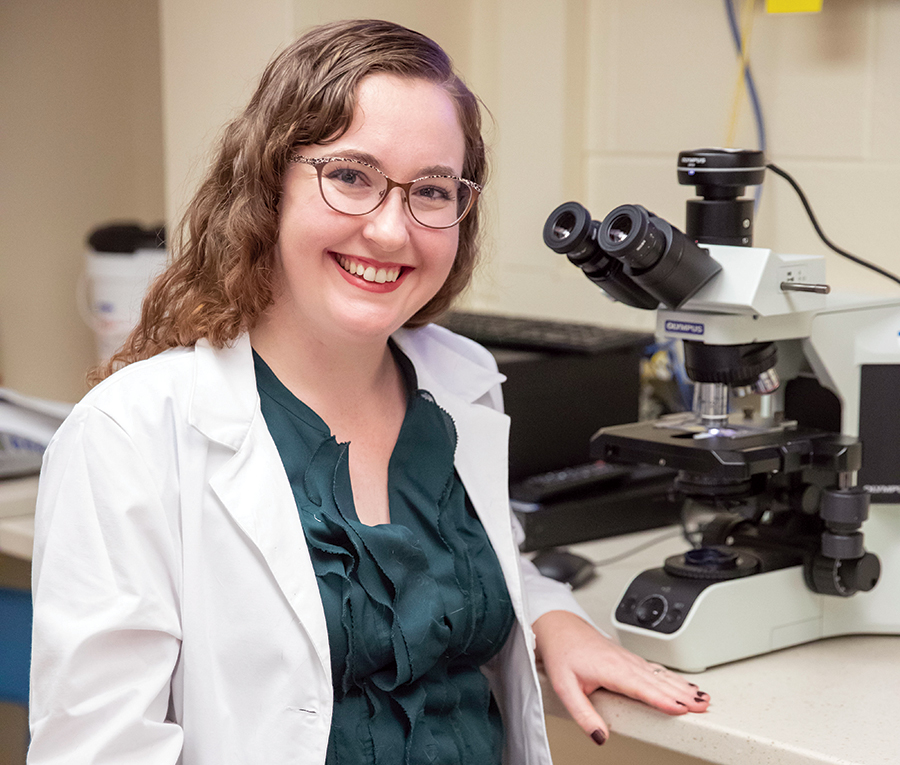Dr. Brame is a clinical assistant professor of dermatology.
Tell us about your background.
I am a North Carolina native who headed north to Massachusetts to attend Wellesley College, where I studied economics and biology. I returned to North Caroline State University for veterinary school and stayed there for a small animal rotating internship.
After my internship, I moved to Philadelphia for a residency in dermatology at the University of Pennsylvania, which I completed in 2021. I am excited to join the faculty at the University of Illinois and am looking forward to getting to explore the Midwest!
How did you become interested in dermatology?
One of the things that I have found most rewarding in caring for animals is getting to build a relationship with pets and their owners over time. Most pets with dermatological diseases will have these conditions lifelong, so being a veterinary dermatologist allows me to form lasting relationships with pets, their owners, and their primary care veterinarians, while we all work together to figure out the best plan to control a pet’s symptoms.
Additionally, I have always been fascinated by diseases where the body’s immune system is not functioning properly, as well as the treatments that we can use to modify the immune system’s response. In dermatology, we get to work with pets with allergies and autoimmune diseases as well as pets that develop recurrent infections due to an ineffective immune system. I enjoy the puzzle as we find a treatment plan for each individual patient, and I love to be able to see their improvement with my own eyes.
What are your special interests?
Like most dermatologists, I love to work with pets with allergies because it can be so rewarding to watch them improve as we get their disease under control. I also enjoy treating immune-mediated skin diseases, such as pemphigus and symmetrical lupoid onychodystrophy (SLO).
Feline dermatology is also an area of interest for me. A lot of the body of dermatological research has been performed in dogs, so we are still learning what will work best for our feline friends. Part of my research is to try to figure out how allergies in cats are similar to or different from allergies in dogs.
Tell us about one of your favorite cases.
One of my favorite patients was a young golden retriever with severe ear disease. She had a chronic ear infection in one ear that had been managed for almost a year without any improvement, despite many different medications having been tried, including culture-based topical and oral antibiotics administered twice daily by her very dedicated owner.
When I first saw her, her ear was so filled with debris that we couldn’t see very well down into the canal, so we first had to control the infection. Because so many medications had been tried previously without success, I worked with our pharmacy team to create a new compounded solution just for her.
Fortunately, I was able to better control the infection, but once I could see down into her canal, I could see what looked like a white blob of tissue. I sampled the tissue under deep sedation, and we diagnosed a benign mass in her ear canal. I referred her to our surgical team, and they remove the mass surgically via a ventral bulla osteotomy.
Afterwards, she came back to see me, and we were finally able to clear her ear infection for good. She is now doing very well two years later!
I love being in a collaborative environment where doctors from many specialties can come together to help a pet get the best outcome.




